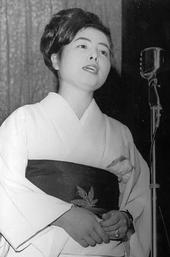MINYO * 民謡 * 日本民謡ã¯ä»£ã€…人ã‹ã‚‰äººã¸å—ã‘継ãŒã‚Œã¦ããŸ
音楽。日本ã¯æµ·ã¨å±±ã«å›²ã¾ã‚ŒãŸè‡ªç„¶è±Šã‹ãªå›½
ã§ã‚ã‚‹ã“ã¨ã‹ã‚‰ã€æ¼å ´ã‚„è¾²æ¥ã§ã®ä½œæ¥æŒãŒæ—¥
本民謡ã®ä¸å¿ƒã¨ãªã£ã¦ã„る。ã„ã‚ã°ç”Ÿæ´»ã®å£°
ã¨ã—ã¦ç”Ÿã¾ã‚Œä¼æ‰¿ã•ã‚Œã¦ããŸéŸ³æ¥½ã§ã‚ã‚Šã€å¤š
ãã®å”„ã®ä¸ã«è±Šä½œã‚„豊æ¼ã‚’願ã†æŒè©žãŒæŠ˜ã‚Šè¾¼
ã¾ã‚Œã€å››å£æŠ˜ã€…ã®ç¯€æ—¥ã€æ–°ç¯‰ã‚„婚礼ç‰ã®ç¥å„€
ã®å”„や祈りã®å”„ãªã©ã€å—ã‹ã‚‰åŒ—ã¸ã¨ç´°é•·ã„æ—¥
本国土ã®ãã‚Œãžã‚Œã®åœŸåœ°ã®è±Šã‹ãªåœ°æ–¹æ€§ã‚„風
土ã®æ§˜åãŒè¡¨ç¾ã•ã‚Œã¦ã„ã‚‹. 日本民謡ã¨ã¯å…ˆç¥–代々æŒã†ã“ã¨ã‚’通ã˜ã¦ä¼ãˆ
られã¦ããŸæ°‘æ—ã®â€œå¿ƒâ€ã§ã‚ã‚‹ã¨ã„ãˆã‚‹ã§ã‚
ã‚ã†ã€‚
MATSUTOYO KAI Est. 1966 * ã¾ã¤ã¨ã‚ˆä¼šã¯1966å¹´ä½è—¤æ¾è±Šï¼ˆã•ã¨ã†ã¾ã¤ã¨ã‚
ˆï¼‰Sensei ã«ã‚ˆã‚Šã«åŒ—åŠ ï¼ˆåŒ—ã‚«ãƒªãƒ•ã‚©ãƒ«ãƒ‹ã‚¢ï¼‰ã«ã¦å‰µç«‹
。日本ã®æ´å²ã‚’ã¨ã‚‚ãªã†è²´é‡ãªâ€œç¾Žâ€ã‚’途絶
ãˆã‚‹ã“ã¨ãªã人々ã«ä¼ãˆã‚‹ã“ã¨ã‚’主目的ã¨ã—
ã€40年間日本民謡ã®æ™®åŠã«åŠªã‚続ã‘ç¾åœ¨ã«ã„ã
Ÿã‚‹ã€‚å—åŠ ï¼ˆå—カリフォルニア)ã«æ‹ 点を移å
‹•ã—ã¦ã‹ã‚‰ã‚‚アメリカ全土ã«è¦–点をã‚ã¦ç¶šã‘ã
€å‡ºå¼µç¨½å¤ã‚’å«ã‚€æ•™æŽˆæ´»å‹•ã‚„æ¼”å¥ãªã©ã‚’ç¹°ã‚Šè
¿”ã™æ¯Žæ—¥ã€‚MINYO STATION Est. 2008 * 民謡ã®Station 構æˆã•ã‚ŒãŸãƒ‹ãƒ¥ãƒ¼æ°‘謡ãƒãƒ³ãƒ‰ã€‚ä½è—¤æ¾è±Šæ°ã®
「日本民謡を世界ä¸ã®åºƒã„世代ã®äººã€…ã«æ¥½ã—
ã‚“ã§ã‚‚らã„ãªãŒã‚‰ãれをä¼ãˆã¦ã„ããŸã„ï¼ã€
ã¨ã„ã†æ€ã„ã¨æŒ‡å°Žã®ã‚‚ã¨ã«ã€ã¾ã¤ã¨ã‚ˆä¼šã®ç”Ÿ
å¾’ã¨ãã®ä»²é–“ãŸã¡ã«ã‚ˆã‚Šï¼’ï¼ï¼ï¼˜å¹´ï¼‘月ã«å‰µ
ç«‹ã•ã‚ŒãŸæ–°ã—ã„å½¢ã®æ°‘謡楽団。ä¼çµ±çš„ãªæ—¥æœ¬
音階ã«åŸºã¥ã„ãŸæ°‘謡ã®å½¢å¼ã«æ´‹é¢¨éŸ³æ¥½ã®ã‚¢ãƒ¬
ンジをã®ã›ã€æ—¥æœ¬äººä»¥å¤–ã®äººã€…や日本ã®è‹¥ã„
世代ã«ã‚‚“ã†ã‘ã‚‹â€éŸ³æ¥½ã‚’創作ä¸ã€‚ç¾åœ¨ã¯ãƒ
サンゼルスをä¸å¿ƒã«ã‚¤ãƒ™ãƒ³ãƒˆã‚„ãŠç¥ã‚Šã€ãƒ‘ー
ティーãªã©ã§æ¼”å¥æ´»å‹•ã‚’繰り広ã’人気上昇ä¸
。日本音楽ã®ã™ã°ã‚‰ã—ã„“美â€ã¨â€œå¿ƒâ€ã‚’世
ç•Œã€ã¾ãŸæ—¥æœ¬ã®äººã€…ã«ä¼ãˆæ®‹ã™ãã£ã‹ã‘ã¨ãª
れるよã†æ—¥ã€…ã¾ã„進ä¸ã€‚
http://www.youtube.com/watch?v=ptBBIJgmtSY
MINYO- Folk songs point to the musical singing passed down for many generations as universal songs. While Japan had been a maritime country, it was also an agricultural country centered on rice farming. In Japan , work songs have been the mainstream of folk songs. Their lyrics often started with a prayer for a good harvest and prosperity. Folk songs have breathed in the lives of people in a free environment, with no need for special protection for a long time. Even in a narrow country such as Japan , from ancient times people have passed on many songs that were cherished in their local land and climate. The prayers of a true heart and old emotions have thus survived. Folk songs are a form of "encyclopedia" for understanding Japan , and one can think that singing folk songs contributes to bringing up Japanese people from childhood.
MATSUTOYO KAI Est. 1966 * Matsutoyo Kai was established in Northern California by Matsutoyo Sato in 1966. She continues to dedicate her self to Minyo in hopes to share this Japanese Art to others. During the past 40-years, she has expanded her teachings to Southern California where she currently resides and continuously travels to teach with spirit and the ambition to keep this rare Art of Japanese History alive.MATSUTOYO SATO- Instructor of MatsutoyoKai - Matsutoyo Sato started learning European music at the age of 6 then at the age of 16 she was exposed to Minyo, Shigin & the Biwa. At the age of 20, she was encouraged by her previous instructors to dedicate her skills under Madame Matsuko Sato, who is the Iemoto-Grand Master of Sato Ryu in Tokyo, Japan, as a live in student for 5-years. During this time, she was able to embrace a variety of traditional music, such as, Minbu, Nagauta, Hauta, and Zoku Kyoku. Her passion and determination to learn music during the 5-years gave her opportunities to perform on Local TV, National TV, Radio, and various stage performances through out Japan.
Age 25, she was asked to teach Minyo in San Francisco, Ca where her classes spread all over Northern Cali, and with in the 10-years she was teaching over 150 students and had many performances; sharing her passion with others. Age 35, she moved to Los Angeles to expand her hopes in grasping hearts in this Japanese art and taught in many cities, such as, San Diego, Orange County, South Bay, Los Angeles, San Fernando Valley, & etc. Her skills in the art has given her many opportunities as a performer and did recordings in her 40’s for movies like, Gypsy Rosely Show & Karate Kid II, and as well, commercials. She’s also performed in Nevada, Hawaii, & Utah.
Matsutoyo Sato has established many relationships with wonderful people in the States and MatsutoyoKai has been able to perform for over 40-years in the US with spirit and the ambition to keep this rare Art of Japanese History alive.MINYO STATION Est. 2008 - 風 㮠行 方 ‘The Direction of the Wind’ -
‘The Direction of the Wind’ Indicates the New Sound of Fusion Minyo-
Japanese Folk Music- that is Created by the New Generation.
Like, the Sound has been Blown from the East to the Rest, Instead of West!
These members also carry the passion towards Music and we were given the opportunity by Matsutoyo Sato to share Minyo in a different style while keeping the traditional sounds.With the guidance of Matstuoyo Sensei and her students, we were able to form this band and perform in Los Angeles. It has become our mission, as many respected Minyo Groups in the United States, to embrace Minyo and to continuously move forward so we can learn more about Japan, the Daily Lives of People in the past, and the Beauty of Japan.
